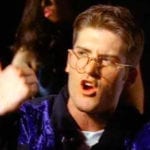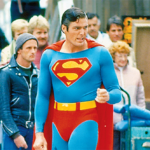 Animals
Animals  Animals
Animals  Weird Stuff
Weird Stuff 10 Weird Things People Used to Do at New Year’s
 Our World
Our World 10 Archaeological Discoveries of 2025 That Refined History
 Weird Stuff
Weird Stuff 10 Fascinating Facts You Might Not Know About Snow
 Miscellaneous
Miscellaneous Top 10 Things Crypto Was Supposed to Change & What Actually Did
 History
History 10 Huge Historical Events That Happened on Christmas Eve
 Music
Music 10 Surprising Origin Stories of Your Favorite Holiday Songs
 History
History 10 Less Than Jolly Events That Occurred on December 25
 Weird Stuff
Weird Stuff 10 Funny Ways That Researchers Overthink Christmas
 Politics
Politics 10 Political Scandals That Sent Crowds Into the Streets
 Animals
Animals 10 Species That Refused to Go Extinct
 Weird Stuff
Weird Stuff 10 Weird Things People Used to Do at New Year’s
 Our World
Our World 10 Archaeological Discoveries of 2025 That Refined History
Who's Behind Listverse?

Jamie Frater
Head Editor
Jamie founded Listverse due to an insatiable desire to share fascinating, obscure, and bizarre facts. He has been a guest speaker on numerous national radio and television stations and is a five time published author.
More About Us Weird Stuff
Weird Stuff 10 Fascinating Facts You Might Not Know About Snow
 Miscellaneous
Miscellaneous Top 10 Things Crypto Was Supposed to Change & What Actually Did
 History
History 10 Huge Historical Events That Happened on Christmas Eve
 Music
Music 10 Surprising Origin Stories of Your Favorite Holiday Songs
 History
History 10 Less Than Jolly Events That Occurred on December 25
 Weird Stuff
Weird Stuff 10 Funny Ways That Researchers Overthink Christmas
 Politics
Politics 10 Political Scandals That Sent Crowds Into the Streets
10 One-Hit Wonders Who Were Strangely Influential
Some musical artists remain famous for years as pervasive elements of our culture. The Rolling Stones and Beyonce come to mind. Then other artists release “I’m Too Sexy” or “Take on Me” and immediately stop being relevant. Finally, there are the few one-hit wonders who influence entire genres with their singular moment of fame. Though they fell from fame, their influence lingers on in countless musicians they opened the door for.
10 Devo
‘Whip It’
Most people remember Devo as those silly white kids who wore futuristic dog bowl hats and yellow hazmat jumpsuits while yelling, “Whip it, whip it good.” While their 1980 hit “Whip It” is an undeniable pop classic and the pre–50 Shades of Grey S&M music video still entertains, Devo gave us so much more than that.
A product of 1970, Devo set out to skewer everything held sacred by American society with their angry and satirical response to the Kent State shootings. They did so by spreading devolution, the all-too-believable theory that mankind is actually growing less intelligent. Devo’s theory was conveniently supported by the parallel rise of disco culture.
In response, the four Akron, Ohio natives created a masterful fusion of punk rock and proto-electronic music well ahead of its time. This forward-thinking amalgamation set the tone for Radiohead and LCD Soundsystem’s careers.
Devo’s 1977 debut album Q: Are We Not Men? A: We Are Devo! is widely hailed as a classic album and “was one of the first pop albums to use synthesizers as an important textural element.” David Bowie, Iggy Pop, and Neil Young were all huge fans of the band in their early years, making Devo a cult favorite as mainstream popularity eluded them. Their cover of “(I Can’t Get No) Satisfaction,” which sounds like the Rolling Stones on a cocktail of Xanax, Ambien, and impure MDMA, epitomizes Devo’s astonishingly underrated greatness. Devo’s obsession with science fiction, absurdism, and anarchy made it cool to be nerdy. Even today, Devo is up to crazy shenanigans by forming Dev2.0, a group of child actors, to re-record Devo’s entire back catalog.
Oh, and lead singer Mark Mothersbaugh wrote the Rugrats theme song.
9 Biz Markie
‘Just A Friend’
Newton’s forgotten fourth law contends, “Every karaoke night must feature the drunkest guy singing ‘Just A Friend’ by Biz Markie.” The rendition always sounds spot-on, too, because nobody ever liked Biz Markie for his singing voice—which isn’t a knock on “Just A Friend,” one of the most comically tragic songs in pop music and the video with the best Mozart costume ever.
Sadly, “Just A Friend” was Markie’s sole hit and his stardom was cut short. Biz’s follow-up album, 1991’s I Need A Haircut, was unexpectedly pulled from the shelves after washed-up 1970s crooner Gilbert O’Sullivan sued Biz for illegally using a sample of O’Sullivan’s 1979 hit “Alone Again (Naturally).” The ensuing lawsuit threw hip-hop on its head when the judge ruled in favor of O’Sullivan. From then on, hip-hop artists needed legal permission to sample other artists. After the lawsuit, Biz’s career never recovered.
This is particularly disappointing because his 1989 album The Biz Never Sleeps represents an artist with unlimited potential. “Vapors” is essential hip-hop for the uneducated, and very few cuts are more intellectual than “Pickin’ Boogers.” At a time when hip-hop was growing increasingly serious, Biz Markie injected humor. The Biz was also one of the first accomplished beatboxers and brought the craft into the mainstream like few before him.
Now he’s making millions off the zany children’s show Yo Gabba Gabba.
8 Edie Brickell
‘What I Am’
Pop music from the 1980s is polarizing; it really all depends on how much you like hairspray and vapid materialism. Edie’s emotionally and intellectually jarring 1988 album Shooting Rubberbands At The Stars was in stark contrast with contemporary pop music. While Tiffany was touring shopping malls and Bobby Brown was somehow famous, Brickell was contemplating her existential worth in a Top 10 hit, “What I Am.” After Edie Brickell came an onslaught of strong, feminist-inspired songwriters—Tracy Chapman, 10,000 Maniacs, and Sinead O’Connor come to mind.
As one reviewer noted, “As debut albums by young bands go, Shooting Rubberbands At The Stars is nearly flawless,” but Brickell did not enjoy being famous, and consciously avoided commercial success with her future releases. While she still maintains a devoted cult following, she has remained remarkably quiet since 1988, except for marrying an aspiring songwriter named Paul Simon. Regardless, Edie Brickell paved the way for the female singer-songwriter explosion of the 1990s.
7 Quiet Riot
‘Cum On Feel The Noize’
Quiet Riot opened the doors for heavy metal to go mainstream when their 1983 album Metal Health became the first heavy metal album to reach the top of the chart. The album’s popularity was largely based on Quiet Riot’s cover of British band Slade’s largely forgotten 1975 song “Cum On Feel The Noize.”
The song had all the hallmarks of pop-heavy hair metal; bombastic drums, shouted choruses, screeching guitar solos and brain-dead lyrics. What high school kid wouldn’t listen to a song with “cum” in the title? It was brilliant marketing.
And while these heavy metal tropes soon became tired cliches, they were fresh at the time. It’s hard to deny Carlos Cavazo’s guitar heroics in Quiet Riot’s magnum opus. After Metal Health, though, the band appeared to stop trying. Their next single was yet another Slade cover, “Mama Weer All Crazee Now.” This made their audience collectively groan and ignore Quiet Riot forever.
Though they quickly disappeared, their influence lingered. After Quiet Riot topped the charts, “all the major labels decided they had to have a metal band. It was similar to when Nirvana exploded and they all looked towards Seattle.” So, thank Quiet Riot for the leather pants, the unbelievably poofy hair, and the outlandish guitars of arguably the most popular musical genre of the 1980s. Without Quiet Riot, there might never have been Motley Crue, Poison, Def Leppard, or Great White.
6 Digable Planets
‘Rebirth Of Slick (Cool Like Dat)’
In 1992, mainstream hip-hop changed forever when Dr. Dre released The Chronic and made hip-hop popular among suburban white teens. Less remembered is Digable Planets’ 1992 debut Reachin’ (A New Refutation Of Time And Space), which helped give critical and commercial recognition to alternative, conscious hip-hop. Along with A Tribe Called Quest and De La Soul, Digable Planets took a jazzy and political departure from the contemporary mainstream hip-hop.
Instead, “Rebirth Of Slick (Cool Like Dat),” the hit from the album, contained an otherworldly jazz sample and silky smooth lyrics your grandparents could get down to. The song was nothing like other radio hits of the day. It spoke “to the consciousness of a large cross section of listeners ranging from alt-rockers, metal freaks, and headz worldwide.” The calm, understated, and intelligent flow of MC’s Butterfly, Ladybug Mecca, and Doodlebug stands in stark contrast to G-Funk’s simplistic, hedonistic lyrics.
However, Digable Planets did not enjoy being famous and their follow-up album, Blowout Comb, was a conscious attempt to leave the mainstream.
5 New Radicals
‘You Get What You Give’
Few bands came and went as suddenly as New Radicals, a late ’90s group organized by the mysterious, hat-wearing Gregg Alexander. New Radicals’ 1998 album Maybe You’ve Been Brainwashed Too was a resounding critical and commercial success, but also their only album. Irresistible lead single “You Get What You Give” catapulted New Radicals to stardom overnight. Mainstream media made a big deal of the song’s final verse, in which Alexander promised to kick Hanson and Marilyn Manson’s asses. In little time, the New Radicals were openly dubbed the next big thing. U2’s The Edge said that “You Get What You Give” is the song he’s most jealous of, and Joni Mitchell described it as “the only thing I heard in many years that I thought had greatness in it.”
Alexander had other ideas. He announced the end of New Radicals during a national tour with the Goo Goo Dolls in 1999. Alexander said he’d grown disillusioned with stardom and wore a hat onstage to hide his lack of enthusiasm.
Afterward, Alexander began exclusively writing songs for others, including the Grammy-winning “Game Of Love” for Michelle Branch and Carlos Santana. Alexander even wrote for Hanson, whom he’d threatened to beat up.
The New Radicals’ only album remains unique to this day. The album’s 1970s soul, funk, and pop melodies are contrasted with cynical, harsh, social-political lyrics. Genre-bending songs like “Mother We Just Can’t Get Enough” and “I Hope I Didn’t Just Give Away the Ending” are still ahead of their time.
4 Faith No More
‘Epic’
Before Rage Against the Machine brought rap-metal to the forefront, there was Faith No More, which hit the Top 10 in 1990 with the inescapable “Epic.” Lead singer Mike Patton’s rapping over crunching heavy metal riffs was unique at the time and immediately made him different than the other two white rappers of the time, Snow and Vanilla Ice.
And who can forget the fish slowly dying out of water in the “Epic” music video? The poor fish was given to the band by eccentric singer Bjork, who did not object to the band’s treatment of her fish.
Faith No More was so much more than “Epic,” as their album The Real Thing proved. Other than “Epic,” the album encompassed jazz, rap, metal, and grunge. Their easygoing cover of The Commodores’ “Easy” became a hit everywhere but the United States, and their other work is worth exploring for all hard rock fans.
Faith No More refused to be pigeonholed, and music critic Stephen Erlewine called their 1992 follow-up, Angel Dust, “one of the more complex and simply confounding records ever released by a major label.” Such eclecticism pushed them out of the mainstream, but endeared them even further to the nu-metalheads who eventually became Korn, P.O.D., and Slipknot.
3 Gary Numan
‘Cars’
While Devo pioneered the incorporation of guitar and synthesizer into rock music, Gary Numan championed a completely synthesized musical style. Numan’s sole American hit remains 1979’s eerily enchanting “Cars.”
Such nihilism fit Numan’s hauntingly robotic and emotionless image, accentuated by his heavy white-face makeup. This aesthetic was made necessary by a bout of acne Numan had to quickly cover up one night before performing. He then decided he liked looking like a mannequin and made a career of it.
The 1980s synth pop revolution, helmed by Depeche Mode and the Human League, was in part started by Numan’s 1979 debut album The Pleasure Principle. Notably it was a rock album featuring zero guitars. Synthesizers made to sound like guitars were the sole instruments. Both sides of the Atlantic loved The Pleasure Principle. One reviewer commented, “There is not a weak track on this album.” Another reviewer—David Bowie this time—said, “Gary Numan has written a couple of the finest things in British pop,” and Trent Reznor openly cites Numan as a primary inspiration.
2 Thomas Dolby
‘She Blinded Me With Science’
We have Thomas Dolby to thank for that awful friend who shouts, “Science!” for no apparent reason. Dolby’s 1982 “She Blinded Me With Science” blended bouncy synthesizers with ridiculous nerd speak to create a rare novelty hit with artistic credibility. Few of Dolby’s other tracks are as easily accessible and flippant.
However, Dolby, along with Gary Numan, showed that the synthesizer was an authentic and serious instrument capable of anchoring an entire genre. Follow-up single “One Of Our Submarines” is a haunting reminder of Dolby’s musical talent.
After his brief fame Dolby did whatever he wanted because his boatloads of cash offered him endless financial security. Dolby played the synthesizer in Foreigner’s massive hits “Waiting For A Girl Like You” and “Urgent.” Meanwhile, he recorded the “Howard the Duck” theme song, co-invented polyphonic ringtones, and was the musical director of TED Talks. The moody and cinematic textures Dolby created with synthesizers revolutionized electronic music.
1 ? And The Mysterians
’96 Tears’
In 1971, legendary music critic Dave Marsh coined the term “punk rock” after seeing ? and the Mysterians perform. The Mysterians’ stripped, down-to-earth performance ethos and bizarre on-stage antics heralded the coming of The Stooges, The New York Dolls, and The Sex Pistols. By 1971 though, the Mysterians and their lead singer, ? (that’s his legal name), were long past their prime.
The Detroit band had a No. 1 hit in 1966 with “96 Tears,” which was recently voted one of the 500 Greatest Songs by Rolling Stone magazine. The track’s simplistic organ and guitar riffs and DIY aesthetics heralded punk rock while opening the door for other garage rock bands, notably fellow Michigan band MC5.
To this day, ? has never been photographed without his trademark sunglasses and repeatedly asserts he is an extraterrestrial.
I’m a comedian who foolishly obtained History and Religious Studies degrees. Follow me @filthyson to see how that’s going.








